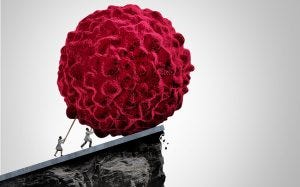Content Spotlight
Podcast: MilliporeSigma says education vital to creating unbreakable chain for sustainability
MilliporeSigma discusses the importance of people, education, and the benefits of embracing discomfort to bolster sustainability efforts.

Gilead Sciences says the advent of cell therapies into second line treatments and increased competition in the space will help boost the “under-penetrated” market.
Having entered the cell and gene therapy space in August 2017 through the $11.9 billion acquisition of Kite Pharma, Gilead Sciences has cemented itself as a pioneer in the sector through the commercialization cell therapies: Yescarta (axicabtagene ciloleucel), approved in the US in October 2017, and Tecartus (brexucabtagene autoleucel) approved in July 2020.
According to Gilead’s CEO Dan O’Day, sales of the two chimeric antigen receptor (CAR) T-cell therapies attributed around $401 million to the firm’s topline for the first six months of the year, but their potential is much higher.

Image: Stock Photo Secrets
Yescarta, for example, was approved as a third-line treatment for patients with relapsed/refractory diffuse large B-cell lymphoma (DLBCL), meaning it would only be administered after no response was seen after at least two other kinds of treatments.
Speaking at the Morgan Stanley 19th Annual Global Healthcare Conference last week, O’Day referenced the ongoing ZUMA‐7 trial, which is assessing Yescarta’s potential as a second-line therapy. Describing it as “a fundamental turning point” for cell therapy.
“The most substantial readouts for frankly the whole field of cell therapy, let alone Kite, was the second line ZUMA‐7 trial, and of course we look forward to showing you more details on that at ASH later this year,” he told delegates.
�“In the absence of being able to move up in lines of therapy given the infrastructure associated with this business, I think we were wondering exactly how much potential this business might have.”
As a third line therapy in LBCL, only about four out of ten patients he said were eligible for cell therapy referral.
“This is potentially curative therapy where it’s certain that patients will die if they don’t do something else. So that’s still quite a low number that implies we have work to do, to continue to get caregivers comfortable with cell therapy, get their access to care, and then even if those four of ten that were referred to therapy, only two of ten eventually get on therapy.”
He continued: “But now in the second line setting, having two cell therapies out there in Tecartus and Yescarta and different disease states, you know this is a business that is again at the very early stages of its penetration.
“I think the second line and frankly some of the competition coming in this sector on the market will have an effect on growing the whole market.”
You May Also Like